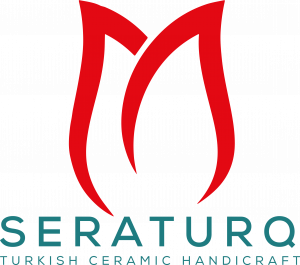KUTAHYA
THE CERAMIC CAPITAL OF TURKEY
KÜTAHYA
Kütahya is a city in western Turkey that lies on the Porsuk River, at 969 meters above sea level. It is the seat of Kütahya Province and Kütahya District. Its population is 263,863 (2022). The region of Kütahya has large areas of gentle slopes with agricultural land culminating in high mountain ridges to the north and west.
History
Justinian fortifications
Under the reign of Byzantine Emperor Justinian I, the town was fortified with a double line of walls and a citadel.
Seljuk, Crusader, and Ottoman periods
Political history, 11th century-1867
In 1071 Cotyaeum (or Kotyaion) fell to the Seljuk Turks and later switched hands, falling successively to the Crusaders, Germiyanids, and Timur-Leng (Tamerlane), until finally being incorporated into the Ottoman Empire in 1428. It was initially the center of Anatolia Eyalet till 1827 when the Hüdavendigâr Eyalet was formed. It was later the center of the sancak within the borders of the Hüdavendigâr Vilayet in 1867. Troops of Ibrahim Pasha of Egypt briefly occupied it in 1833.
Economy
The industries of Kütahya have long traditions, going back to ancient times.
Kütahya is famous for its kiln products, such as tiles and pottery, which are glazed and multicolored. Modern industries are sugar refining, tanning, nitrate processing, and different products of meerschaum, which are extracted nearby.
In the Ottoman period, Kütahya was a major cotton production center of the empire. Modern local agricultural industry produces cereals, fruits, and sugar beet. In addition, stock raising is of much importance. Not far from Kütahya, there are important mines extracting lignite.
Kütahya is linked by rail and road with Balıkesir 250 km (155 mi) to the west, İstanbul 360 km (224 mi) to the northwest, Konya 450 km (280 mi) to the southeast, Eskişehir 70 km (43 mi) northeast and Ankara 300 km (186 mi) east.
Culture
Kütahya’s old neighborhoods are dominated by traditional Ottoman houses made of wood and stucco, some of the best examples being found along Germiyan Caddesi. It has many historical mosques such as Ulu Camii, Cinili Camii, Balikli Camii, and Donenler Camii. The Şengül Hamamı is a famous Turkish bath located in the city.
The town preserves some ancient ruins, a Byzantine castle, and a church. During the late centuries, Kütahya was renowned for its Turkish earthenware, of which fine specimens may be seen at the national capital. The Kütahya Museum has a fine collection of arts and cultural artifacts from the area, the house where Hungarian statesman Lajos Kossuth lived in exile between 1850 and 1851 is preserved as a museum. Archived 2011-07-21 at the Wayback Machine.
Source : Vikipedia













